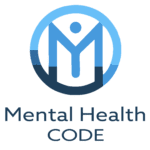

Loneliness is more than just being alone; it’s a profound sense of isolation. It’s the emotional experience of feeling unseen or disconnected, even if surrounded by people. Many adults experience loneliness regularly, with recent statistics showing that 36% of U.S. adults report frequent feelings of loneliness. Younger adults and marginalized groups are especially impacted. Recognizing your patterns is the first step to change. Are you loneliest in the mornings, evenings, or weekends? What thoughts tend to arise during those moments? Bringing these patterns into awareness allows you to choose different responses and seek out healthier support systems. Remember, loneliness is not a flaw — it’s a signal that connection matters to your well-being.
The health impact of loneliness is significant. According to the U.S. Surgeon General’s 2023 Advisory on the Epidemic of Loneliness and Isolation, loneliness increases the risk of premature death to a level comparable to smoking 15 cigarettes a day. It’s also linked to increased risks for anxiety, depression, cognitive decline, and even heart disease. In this light, loneliness isn’t “just a feeling” — it’s a public health issue. Acknowledging the impact of isolation on both mind and body helps us prioritize human connection as a daily wellness need.
Real-life experiences bring this issue into focus. Consider a single parent who interacts with coworkers, clients, and children all day — yet feels emotionally invisible and unsupported. Or the young adult who recently relocated for work: they attend meetings, share online, and go out occasionally, but lack deep connection. Loneliness often hides behind busy schedules, roles of responsibility, or smiling photos — but the internal reality is one of emotional disconnection.
What can we do about it? Even small steps make a difference. Start by identifying who in your life you feel safe with, and make space for honest conversations. Reaching out with, “I’ve been feeling kind of isolated lately. Want to catch up?” takes courage, but often opens the door for deeper connection. Join a support group, volunteer, or engage in shared-interest activities — these environments naturally foster bonding. If emotional wounds make connecting hard, therapy or counseling can help unpack those blocks with compassion.
Ultimately, loneliness reminds us of our need for belonging. Like hunger signals a need for food, loneliness signals a need for connection. And just like you wouldn’t shame yourself for feeling hungry, you don’t need to feel shame for needing people. You deserve care, companionship, and understanding — and choosing to seek them is an act of strength.
A team leader who consistently cancels one-on-ones, avoids check-ins, and never asks how their team is feeling emotionally may create an environment where everyone feels isolated and undervalued — even while “collaborating.”
U.S. Surgeon General 2023: Loneliness increases the risk of early death as much as smoking 15 cigarettes a day.